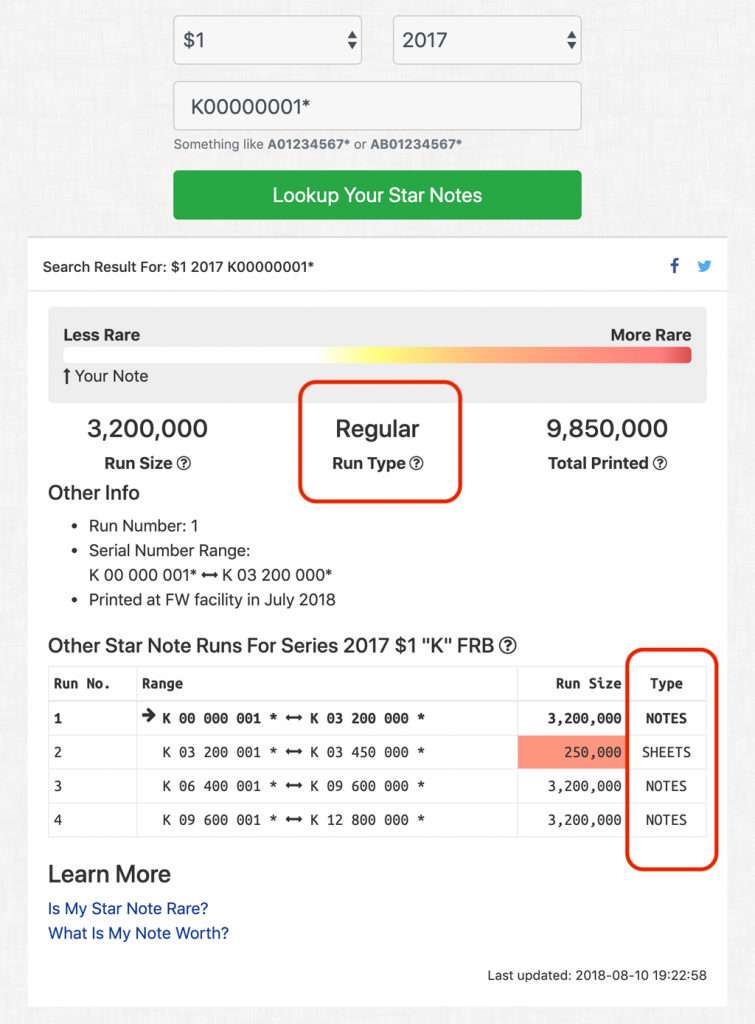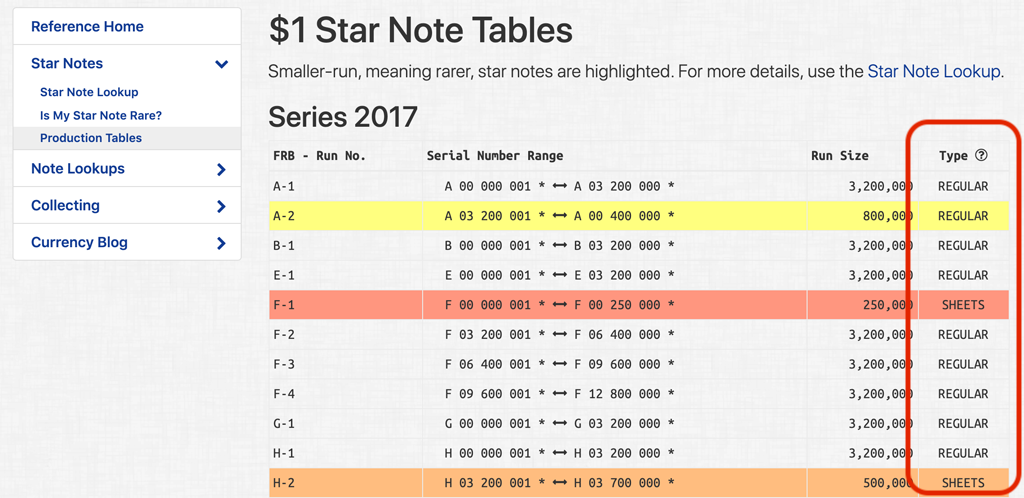The Star Note Lookup and production tables have a "type" column that shows either "REGULAR" or "SHEETS." If you have a sheet-type star note and a regular-type star note, nothing visible will indicate which is which. They look exactly same - which is why using the tables and lookup is so important. The difference between the two types is when in the printing process the star notes are used to replace damaged items. This is an important piece of information in determining the rarity of a star note.
Before digging in further, it's useful to have a basic understanding of how the Bureau of Engraving and Printing produces paper money. They have a useful page detailing the process here. The most relevant part to know is that paper money is not printed one bill at a time. Paper money is printed in sheets of 32 or 50. The sheets are later put into stacks of 100 that are then cut into individual 100-packs containing consecutive serial numbers.
Sheet Print Type - Used BEFORE Cutting
Let's say something went wrong before the cutting process occurred - like a sheet gets folded, over-inked, or a serial number mismatch. If the BEP's automated systems catch the error, that individual sheet would be pulled out of the stack and replaced with a single sheet of star notes. The stacks would then continue down the production line and eventually get cut, packed, wrapped, and shipped to a Federal Reserve Bank.
These are the rarer of star notes. They are typically printed in lower quantity - usually 640,000 notes or less per run. Depending on the mistake they are use to replace, one sheet or a few sheets might be used at a time. The stacks of non-mistake notes and replacement sheets continue down the line and eventually get cut into 100-packs.
This causes these star notes to enter circulation much more randomly, and are much more difficult to find in bulk. It's impossible to find 100 consecutive examples in a row.
Regular Print Type - Used AFTER Cutting
Star notes can also be used to replace damaged notes after the sheets are cut into 100-packs. If a BEP operator (or computer) sees a damaged pack of notes, it would be set aside for destruction and replaced with a 100-pack of star notes. These star notes are considered the "regular" print type.
It's not difficult to see that these are far less rare. These star note runs are printed in much larger sizes - typically 1.28 million notes up to the maximum run size of 3.2 million. Many of these 100-packs of star notes are found by collectors and put on eBay for sale.
Pretty straightforward, right? Here's where you can see this information added to the Lookup and tables:


Please do not contact me for appraisal requests.
They will be ignored and/or deleted. I receive too many to handle. Read the article "What Is My Note Worth?" to learn how to determine your note's value.